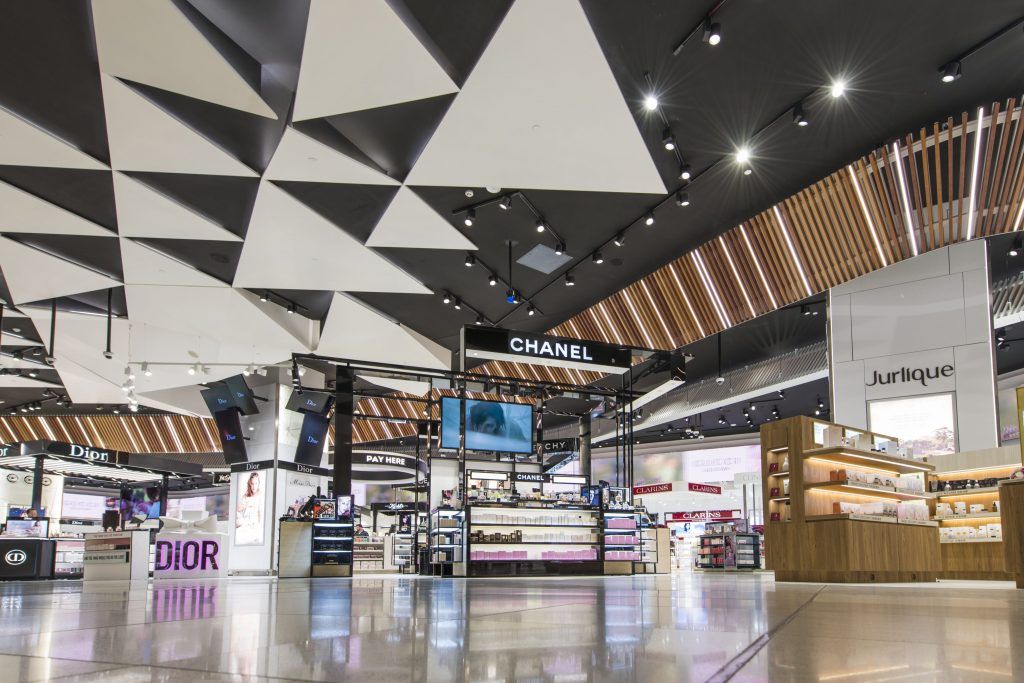In today’s dynamic market, retailers face an unprecedented rate of change driven by evolving consumer preferences, technological advancements, and fierce competition. As customer expectations continue to shift rapidly, businesses must respond with strategic agility to survive and thrive. This article explores how retailers around the globe are adapting to the emerging trends, what challenges they encounter in the process, and the various innovative approaches they are taking to meet consumer demands. By examining recent studies, industry reports, and expert opinions, we delve deeply into the strategies that define the current and future retail landscape. The article covers diverse topics such as digital transformation, customization, omni-channel strategies, sustainable practices, data analytics, and emerging technologies. It aims to provide business owners, marketing professionals, and retail strategists with comprehensive insights and practical recommendations for adapting to consumer preferences in a rapidly changing environment.
The Changing Landscape of Retail
The retail environment is transforming in response to dramatic shifts in consumer behavior. Traditionally, brick-and-mortar stores dictated the pace of retail operations, but the digital revolution has blurred these lines significantly. Retailers are now expected to provide a seamless customer experience that crosses the boundaries of physical stores and online platforms. This section examines the major trends driving this transformation.
Trends Shaping the Market
Recent surveys indicate that a majority of consumers now favor personalized shopping experiences that reflect their individual tastes and lifestyles. Several key trends include:
A. Digital Commerce Expansion: The surge in e-commerce platforms has expanded the reach of retailers far beyond traditional geographic limitations. Retailers are investing heavily in online infrastructure to serve customers across diverse regions.
B. Mobile Shopping and Social Commerce: With the ubiquitous presence of smartphones, mobile applications, and social media, consumers are increasingly making purchases through these channels.
C. Experience-Driven Shopping: Modern consumers value experiences more than ever before. Interactive in-store events, augmented reality (AR) trials, and personalized consultations are examples of how retailers are enriching the shopping journey.
D. Sustainability and Ethical Consumption: A growing number of consumers are favoring brands that prioritize sustainable practices and ethical operations. Retailers must now demonstrate their commitment to corporate social responsibility.
E. Omni-Channel Integration: Seamless integration of online and offline experiences is now a prerequisite for success. Retailers are developing unified systems that connect various sales channels to improve customer convenience.
Consumer Behavior Shifts: A Detailed Analysis
Today’s consumers are more informed and discerning than ever. They have access to a plethora of information, reviews, and price comparisons, leading to heightened expectations. Retailers must understand these changes to create strategies that resonate with their target audience.
Factors Influencing Modern Consumer Behavior
Several underlying factors contribute to how consumers make purchasing decisions today:
A. Technological Adoption: The rapid proliferation of digital devices and connectivity has enabled consumers to access information instantly, compare products, and make quick decisions.
B. Economic Considerations: Economic fluctuations, including recessions and booms, directly affect consumer spending habits. During lean periods, consumers are increasingly price-sensitive and tend to seek value-driven options.
C. Cultural Shifts: A more globalized world has made consumers aware of international trends and practices. This exposure drives demand for innovative products, diverse offerings, and high-quality customer service.
D. Social Influences: Social media platforms and peer recommendations play a significant role in shaping opinions and purchasing decisions. Retailers are leveraging these platforms to build communities and influence preferences.
E. Environmental Awareness: With greater emphasis on sustainability, consumers are considering environmental impacts in their purchasing decisions. This factor has spurred the growth of eco-friendly products and practices.
Digital Transformation in Retail
Digital transformation is at the core of the modern retail revolution. It encompasses the adoption of new technologies and innovative business models to enhance the efficiency, personalization, and responsiveness of retail operations. The following sections outline critical areas where digital transformation is making a significant impact.
E-Commerce and Mobile Platforms
The rise of e-commerce has redefined the shopping experience by providing convenience, variety, and competitive pricing. Retailers are investing in robust online platforms and mobile applications that allow consumers to shop anytime and anywhere. For example, companies like Amazon and Alibaba continue to dominate the digital marketplace by refining their algorithms and personalizing the shopping journey based on user behavior and historical data. Additionally, mobile applications are being optimized for faster transactions and seamless user experiences, ensuring that consumers can complete purchases with minimal friction.
The Role of Data Analytics and Artificial Intelligence
Data is the lifeblood of modern retail. Through advanced analytics and artificial intelligence (AI), retailers are now able to glean insights into customer behavior, preferences, and market trends. These insights inform business strategies in real-time. Retailers employ AI-driven chatbots to handle customer inquiries and personalized recommendations that increase conversion rates. Moreover, predictive analytics help forecast demand and optimize inventory management, significantly reducing overhead costs and enhancing customer satisfaction.
A. Customer Data Platforms: These platforms allow retailers to consolidate data from multiple sources into a single, actionable view.
B. Predictive Analytics Tools: Advanced algorithms forecast customer behavior, helping tailor promotions and stock management.
C. Real-Time Personalization Engines: These systems dynamically adjust website content and product suggestions based on live customer data.
Augmented Reality and Virtual Reality
Emerging technologies such as augmented reality (AR) and virtual reality (VR) are redefining the retail space by offering immersive experiences that blend physical and digital elements. Retailers are incorporating AR features that allow customers to virtually “try on” products, from clothing to furniture, thereby reducing the uncertainty associated with online purchases. VR, on the other hand, facilitates virtual tours of physical stores, offering an engaging preview of the shopping environment. Such innovations not only enhance the consumer experience but also help retailers differentiate themselves in a saturated market.
Customizing the Customer Experience
In an era where personalization is paramount, retailers are investing heavily in tailoring experiences to meet individual consumer needs. The traditional one-size-fits-all approach is being replaced by highly targeted strategies that emphasize customer uniqueness. By leveraging behavioral data, past purchases, and demographic information, retailers can create customized marketing messages, promotions, and product recommendations.
Strategies for Personalization
Retailers are adopting several strategies to customize the consumer experience effectively:
A. Personalized Marketing Campaigns: Utilizing customer data to deliver targeted promotions and advertisements can lead to significant increases in conversion rates.
B. Dynamic Pricing Models: Algorithms can adjust prices in real-time based on demand, consumer behavior, and market conditions.
C. Customized Product Recommendations: Advanced systems analyze purchase history to suggest products that align closely with individual tastes.
D. Tailored Customer Service: Customer support is being enhanced with personalized responses, often aided by AI chatbots, to address unique consumer concerns promptly.
E. Loyalty Programs: Reward systems that are customized based on buying behavior help build stronger customer relationships.
Omni-Channel Retail Strategies
A seamless omni-channel approach is crucial in today’s retail ecosystem. Consumers expect a coherent experience whether they interact online or offline, and retailers must create an integrated environment to cater to these expectations. The omni-channel strategy involves the convergence of multiple channels such as brick-and-mortar stores, e-commerce platforms, mobile apps, and social media.
Key Elements of an Omni-Channel Strategy
To execute an effective omni-channel approach, retailers must focus on several core elements:
A. Integrated Inventory Management: Accurate, real-time inventory management across all channels prevents stockouts and ensures timely fulfillment.
B. Unified Customer Profiles: Consolidating customer data from various touchpoints provides a comprehensive view of consumer behavior and preferences.
C. Cross-Channel Promotions: Ensuring that promotions and discounts are consistently applied across all channels helps in retaining customer trust.
D. Flexible Fulfillment Options: Providing a range of delivery options—from in-store pickups to home deliveries—caters to varying consumer needs.
E. Streamlined Checkout Processes: An intuitive and unified checkout process that works seamlessly across digital and physical platforms enhances the overall shopping experience.
The Impact of Social Media and Influencer Marketing
Social media is now an essential tool for retailers aiming to build brand presence and engage with their target audience. Platforms such as Instagram, Facebook, and TikTok offer immense opportunities for retailers to connect directly with consumers, listen to their feedback, and promote products through influencer collaborations.
How Social Media is Reshaping Retail
A. Engagement and Community Building: Social media platforms allow retailers to interact with their customers in real-time, building communities and fostering loyalty.
B. User-Generated Content: Encouraging customers to share their experiences and reviews not only builds credibility but also boosts organic reach.
C. Influencer Collaborations: Partnering with influencers can amplify a brand’s message and attract a wider audience, especially among younger consumers.
D. Real-Time Feedback: Social media provides instant feedback on new product launches and marketing campaigns, enabling retailers to adjust strategies rapidly.
E. Cost-Effective Advertising: Compared to traditional media, social media advertising offers high ROI, making it accessible even for small and medium-sized enterprises.
Sustainable Practices in Modern Retail
In response to growing environmental concerns, sustainable practices have become integral to the retail strategy. Consumers today demand transparency and ethical responsibility from the brands they support. Retailers who prioritize sustainability not only contribute to environmental preservation but also tap into a market segment that is ready to reward ethical practices with their loyalty and patronage.
Approaches to Sustainability
Retailers are adopting numerous strategies to enhance sustainability and promote ethical consumption:
A. Eco-Friendly Packaging: Shifting from traditional plastic packaging to biodegradable or recycled materials helps reduce environmental waste.
B. Energy-Efficient Operations: Retailers are investing in energy-efficient lighting, heating, and cooling solutions in both physical stores and warehouses.
C. Ethical Sourcing: Ensuring that products are sourced from manufacturers who adhere to fair labor practices and environmental standards is increasingly important.
D. Waste Reduction Programs: Recycling initiatives and waste reduction programs are being implemented to minimize the environmental footprint.
E. Community Engagement: Many retailers engage with local communities through sustainability drives, encouraging customers to participate in eco-friendly practices.
Leveraging Data and Consumer Insights

Data analytics plays a pivotal role in reshaping retail strategies. By harnessing the power of big data, retailers can derive valuable insights into consumer behavior, market trends, and operational efficiency. Data-driven decision-making is increasingly prevalent, leading to innovations and enhanced customer experiences.
Applications of Data Analytics in Retail
A. Customer Segmentation: Retailers can identify distinct customer segments based on purchasing patterns, geographic location, and online behavior. This segmentation facilitates more precise targeting of products and services.
B. Sales Forecasting: Advanced analytics enable retailers to anticipate future demand, adjust inventory levels, and plan promotional activities with greater accuracy.
C. Marketing Optimization: Data insights help refine marketing campaigns and optimize budget allocation across various channels to achieve maximum return on investment.
D. Performance Metrics: Continuous monitoring of key performance indicators (KPIs) such as customer engagement, conversion rates, and retention rates drives operational improvements.
E. Feedback Analysis: Leveraging customer feedback through surveys, reviews, and social media comments allows retailers to address pain points and enhance service quality.
Emerging Technologies and Retail Innovation
The rapid pace of technological innovation continues to redefine how retailers interact with consumers. Artificial intelligence (AI), machine learning, and blockchain are just a few of the cutting-edge technologies being integrated into retail operations. Their application not only streamlines processes but also opens new avenues for customer engagement and trust-building.
Key Technologies Shaping Retail
A. Artificial Intelligence and Machine Learning: These technologies enable advanced personalization, predictive analytics, and efficient supply chain management.
B. Blockchain Technology: Blockchain offers enhanced transparency in transactions and product provenance, which is particularly relevant in industries where authenticity and ethical sourcing are critical.
C. Internet of Things (IoT): IoT devices, such as smart shelves and sensor-driven inventory systems, improve in-store efficiency and provide real-time data on product performance.
D. Robotic Process Automation (RPA): The automation of repetitive tasks using robots or software leads to increased efficiency and reduced operational costs.
E. Virtual and Augmented Reality: As discussed earlier, VR and AR are revolutionizing the shopping experience by bridging the gap between digital and physical retail environments.
Strategies for Overcoming Retail Challenges
Despite the many opportunities for growth, retailers face several challenges in adapting to ever-changing consumer preferences. These challenges include technological integration, data privacy concerns, supply chain disruptions, and intense competition. However, with proactive strategies, retailers can mitigate these obstacles.
Mitigation Strategies
A. Investment in Technology: Allocating budget towards state-of-the-art technologies ensures that retailers remain competitive and agile.
B. Training and Development: Equipping staff with the necessary skills to operate new technologies and adopt innovative practices is crucial for success.
C. Robust Data Security: Implementing stringent data protection measures builds consumer trust and safeguards sensitive information.
D. Agile Supply Chain Management: Establishing flexible supply chain systems can help mitigate disruptions, whether due to geopolitical issues, natural disasters, or sudden market shifts.
E. Customer-Centric Innovations: Continuously soliciting and integrating customer feedback into operations leads to constant improvement and adaptation.
The Future of Retail: Insights and Predictions
As the retail landscape continues to evolve, several future trends are set to further influence consumer behavior and business strategies. Retailers who anticipate these changes and adapt early are more likely to enjoy sustained growth and market relevance.
Anticipated Trends
A. Increased Focus on Hyper-Personalization: With the advancement of AI and machine learning, the ability to offer highly personalized shopping experiences will become the norm.
B. Expansion of Virtual Experiences: VR and AR will likely become standard tools for product demonstrations, virtual try-ons, and immersive brand storytelling.
C. Integration of Smart Technologies: IoT and smart technology integration within physical stores will facilitate enhanced data collection and a seamless shopping experience.
D. Continued Growth of Eco-Conscious Retailing: Environmental sustainability will remain a core focus, with more retailers committing to green practices to meet consumer demands.
E. Globalization and Localization: While global e-commerce platforms continue to expand, local adaptations that cater to regional preferences and regulatory requirements will be essential.
F. Convergence of Online and Offline Channels: The omni-channel model will evolve to create even more integrated and frictionless customer experiences, blurring the lines between digital and in-person shopping.
Expert Opinions
Industry experts suggest that the key to future success in retail lies in the ability to combine technological innovation with a deep understanding of customer needs. Successful retailers will be those who continuously evolve, leveraging data insights to adjust strategies in real-time and remaining flexible in the face of new challenges.
Practical Recommendations for Retailers
For retailers looking to implement changes and remain competitive, the following actionable steps are recommended:
A. Conduct Comprehensive Market Research: Understand shifting consumer demographics and preferences using both qualitative and quantitative data.
B. Invest in Digital Transformation: Upgrade digital platforms and adopt technologies that enhance the customer experience, from mobile optimization to AI-driven personalization.
C. Embrace an Omni-Channel Strategy: Ensure a consistent brand experience across all retail channels and invest in systems that support unified operations.
D. Commit to Sustainability: Incorporate sustainable practices in every aspect of the business—sourcing, operations, packaging, and community engagement.
E. Empower Employees with Training: Equip staff with modern tools and knowledge to effectively handle evolving customer demands and digital tools.
F. Monitor and Adapt to Industry Trends: Continuously keep abreast of industry research, competitor strategies, and emerging technologies to remain ahead of market changes.
G. Leverage Social Media for Engagement: Build robust social media strategies that not only promote products but also foster community and enable direct consumer interaction.
H. Utilize Data-Driven Insights: Regularly analyze customer data to refine marketing strategies, product offerings, and promotional activities, ensuring they align with consumer expectations.
Case Studies: Success Stories in Retail Adaptation
Several retailers have successfully navigated the transition to a consumer-centric model by adopting innovative strategies that prioritize customer preferences. Highlighting these case studies provides practical examples and serves as inspiration for others.
Global Retail Giants
A. Amazon: Known for its relentless focus on customer satisfaction, Amazon continues to push the envelope in personalization, rapid delivery, and dynamic pricing. Its investment in AI and predictive analytics has set a high benchmark in the industry.
B. Walmart: Walmart has significantly revamped its digital presence and supply chain operations to compete in the e-commerce arena. Its omni-channel strategy, coupled with sustainable initiatives, has repositioned it as a forward-thinking retailer.
C. Alibaba: With a dominant presence in Asia, Alibaba has transformed the retail landscape through its integration of social commerce, mobile payments, and immersive online shopping experiences.
Local Innovators
A. Boutique Stores: Smaller retailers are leveraging local market insights to create curated in-store experiences and personalized online services, which have resulted in increased customer loyalty and sales.
B. Independent Brands: Many independent brands utilize social media platforms to directly interact with their customers, allowing for agile product innovations and more responsive customer service.
Challenges and Opportunities
While the transition to a consumer-centric retail model provides numerous benefits, it also presents several challenges that must be managed effectively. Retailers must balance the need for digital transformation with the realities of budget constraints, infrastructural limitations, and the necessity of maintaining personal connections with their customers.
Overcoming Challenges
A. Budget Constraints: Not all retailers have large budgets for technology investments. Gradual, phased approaches can allow smaller businesses to adopt new systems without overwhelming financial strain.
B. Technological Integration: Integrating new technologies with legacy systems poses significant challenges. Retailers should prioritize scalable solutions that allow for incremental upgrades.
C. Customer Data Privacy: With data breaches on the rise, retailers must invest significantly in cybersecurity measures to maintain consumer trust and comply with global privacy regulations.
D. Market Saturation: With an increasing number of players in the retail market, differentiating one’s brand requires constant innovation and a clear understanding of customer needs.
E. Talent Acquisition: The need for skilled personnel to manage advanced digital tools is growing. Retailers must invest in employee training and development to build a competent workforce.
Opportunities for Growth

A. Expansion into New Markets: Digital platforms enable retailers to reach markets that were previously inaccessible, providing endless possibilities for growth.
B. Innovative Customer Engagement: The integration of AI, VR, and AR opens up new avenues for customer interaction, setting the stage for a more engaging shopping experience.
C. Sustainability as a Selling Point: Consumers are increasingly drawn to brands that prioritize environmental and social responsibility, providing opportunities for retailers to differentiate themselves in the market.
D. Data Monetization: The intelligent use of consumer data can lead to the development of new business models and revenue streams, such as subscription services or loyalty programs.
Conclusion
The retail landscape is in a state of continuous evolution, largely driven by rapidly changing consumer preferences and technological advancements. Retailers must adopt a proactive and forward-thinking approach to remain competitive in this environment. By investing in digital transformation, enhancing personalization, integrating omni-channel strategies, and committing to sustainable practices, businesses can create resilient models that not only meet but exceed modern consumer expectations. A customer-first approach, bolstered by data-driven insights and innovative technologies, is essential for enduring success in today’s dynamic market. As we move forward, the retailers who embrace these changes will be best positioned to capitalize on emerging opportunities, surmount obstacles, and ultimately redefine the future of retail.
Further Insights and Future Research
In addition to the strategies discussed above, retailers should continuously monitor emerging trends such as consumer-driven innovation, augmented customer experiences, and the impact of geopolitical and economic changes on market behavior. Future research in the field may focus on:
A. The Role of Blockchain in Enhancing Supply Chain Transparency: Further exploration into blockchain applications could yield revolutionary improvements in consumer trust and operational efficiency.
B. Enhanced Personalization through Advanced Machine Learning: As algorithms become more sophisticated, the capability for hyper-personalization will likely transform the retail experience significantly.
C. Sustainable Retail Models: In-depth case studies on the long-term benefits of adopting green practices could provide valuable insights for retailers worldwide.
D. Integration of Health and Safety Protocols Post-Pandemic: The lessons learned during the COVID-19 pandemic continue to influence how retailers manage physical interactions and customer safety.
E. Global versus Local Consumer Trends: Understanding how global trends are moderated by local cultural and economic factors will remain crucial as retailers expand their reach internationally.
Retailers around the world are tasked with navigating a complex interplay of technology, data, and human behavior. Embracing change, investing in innovative solutions, and maintaining an unwavering focus on the customer will ensure that brands not only adapt to consumer preferences but also thrive in a competitive environment.






